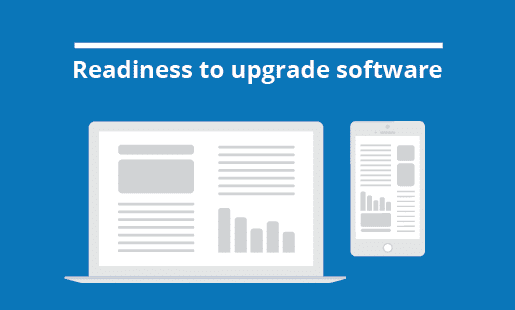How to Organize the Migration of Your Current Invoicing Platform When Accounting is involved


We were working with a client to assess a full-service migration to LeanLaw where we would also recommend an accountant. The client was handling the Invoicing and Accounts Receivable in one tool (Time Slips) and the Accounting in a second tool (QuickBooks Desktop). She was interested in using LeanLaw. To do so, she would need to transfer from QuickBooks Desktop to QuickBooks Online.
The following are some issues we asked the client to consider:
If you want to use LeanLaw, know that we are compatible with QuickBooks Online but not the desktop version. QB Desktop, 2009 -2014 version, requires several steps as part of the migration to QuickBooks Online. Newer versions are fully automated.
Migrating your accounting to QuickBooks Online is something that you will be doing anyway in the next couple of years as Intuit focuses more of their energy to QuickBooks Online – that’s where the customers are. QuickBooks Online is the future. At some point, all Desktop users will be migrating. Might as well do it sooner than later so that you can reap the benefits of the online features — access from anywhere and real time data, just to name two outstanding ones.

Are there any instances of these clients in your QB Desktop? If there are no clients in QuickBooks, the preferred migration pathway is to enter the clients in LeanLaw and then allow LeanLaw to add them to QuickBooks Online.
If there are clients already in QuickBooks, you would use the client import tools which are a function of LeanLaw’s QuickBooks Online sync. In terms of size, there is a consideration of historical clients and who is truly active. Most LeanLaw clients prefer to bring over the current clients and matters and not inundate QuickBooks Online/LeanLaw with the closed legacy clients.
You need to know exactly what each client owes as of the last invoice. That will be the opening balance in QuickBooks Online so that you can receive the money. For example, as of 3/31, the client owes $3000 – as invoiced from your old tool – so in QuickBooks Online, you would establish that as the opening balance. This allows you to receive the payment in QuickBooks Online.
If you don’t use an opening balance and collect that $3000, it would be deemed a credit. So the opening balance allows the payment to be made against the money owed.

Similar to accounts receivable, you need to know what each client has in trust balances as of the last invoice period. This establishes the liabilities for the law firm based on the funds held in trust. Similar to accounts receivable, you’ll use the trust balance as of the last bill period and that will establish that you hold a specific dollar amount for a specific client for funds held in trust.
LeanLaw helps facilitate this process: when the trust liability is established in LeanLaw, you can cite the opening balance. It’s worth noting that this opening balance is not a deposit because you’re not adding cash into the bank account, you’re just accounting for the liability side of what funds you’re holding on behalf of the client.
If QuickBooks Online is being established for the first time, then having reconciled bank statements is critical because you’ll need the opening balance for a particular month. If you’re doing a migration from desktop to online, reconciliation is a best practice but not critical.

Think about this in terms of a cut-over period. What most law firms do is pick a final day of invoicing out of their final system (the cut-over date) – eg, 3/31. The idea is that all new users will enter time as of 4/1. Thus, in the month of March, you want to bring over all client/matter information into LeanLaw so that your timekeepers have access to the appropriate client / matters starting on 4/1.
Once the billing is complete on 3/31, you will establish a ledger of accounts receivable and funds held in trust. That accounting data can be integrated into the new QuickBooks Online account in early April because your goal is simply to do the first invoicing at the end of April. Your first priority is to get client/matter data in and the accounting information can follow. Usually, you have a 30 day billing cycle, so there is some space to insert the accounting data.
If you have more questions, contact us via email, phone or on our website intercom (widget at the lower right side of the page)
Join the Movement!